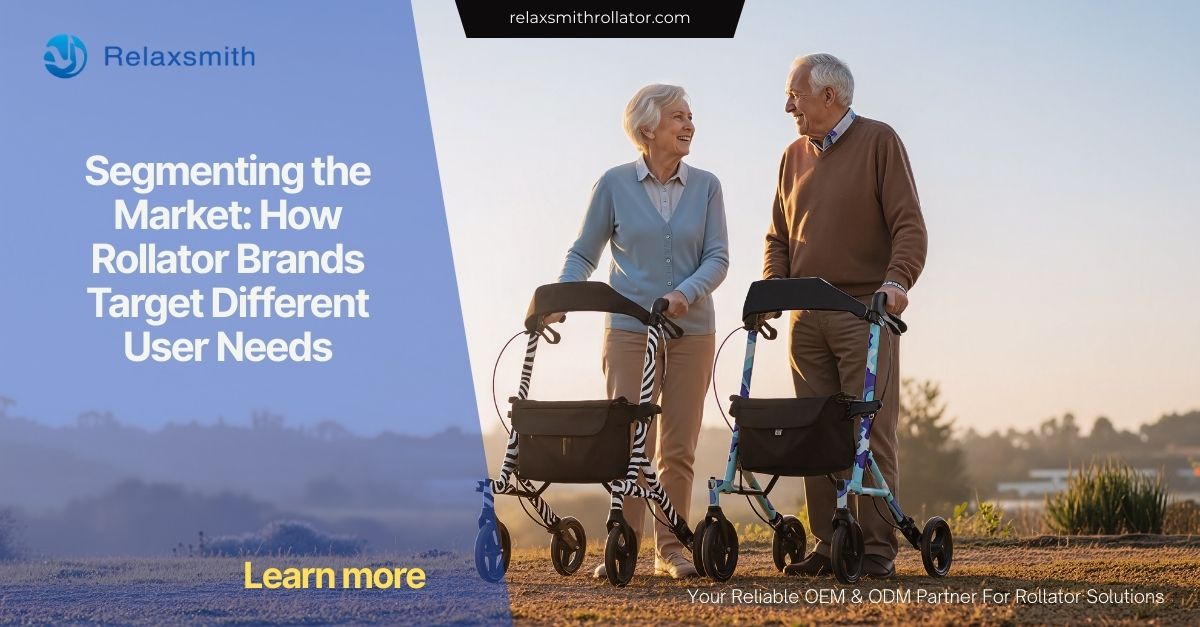Segmenting the Market: How Rollator Brands Target Different User Needs

The rollator market is diverse: some users need lightweight models, others need rugged outdoor performance, some demand compact folding for transport, and others require bariatric strength. As a product manager or procurement lead, you will notice that many brands specialize in certain types of rollators to serve specific segments very well. Understanding how segmentation works helps you predict performance, align specs, and select suppliers who match your users’ needs.
1. User Demographics and Use Environments
User type matters: seniors who spend most of their time indoors have different priorities than active users using terraced yards or uneven sidewalks. Urban transport users or frequent travelers value portability, compact folding, and minimal weight, while institutional users prioritize durability, easy cleaning, lap trays, and accessories. Brands that specialize in certain types of rollators often excel because they deeply understand their target environment and customize design accordingly—wheel size, frame strength, handle ergonomics, folding mechanisms, etc.
2. Design Priorities by Segment
Different segments impose different design constraints. For example:
Lightweight travel rollators: materials like aluminum or carbon fiber, minimal accessories, fast fold mechanisms.
Bariatric models: reinforced frames, higher load capacity, broad wheels, heavy‑duty brakes.
Indoor / compact fold: slim profile, small wheels, ease of maneuvering in tight spaces.
Outdoor / rough terrain: large wheels, shock absorption, weather‑resistant finishes.
Brands that specialize in certain types of rollators can optimize these trade‑offs more efficiently. They invest in materials, testing, and supplier relationships tailored to their niche instead of compromising across a broad product line.
3. Market Positioning and Pricing Strategy
Specialization often enables premium pricing or better value propositions. A rollator aimed at travelers can command higher price per kilogram saved, just as a bariatric model can charge more for load capacity. When a brand clearly targets a segment, its messaging, warranty, accessory offerings, and service all align. Procurement teams should identify whether the brand’s pricing reflects real performance (e.g., tested load, durability) or simply premium marks. Specs should match what is promised, especially when the brand specialize in certain types of rollators.
4. Supplier and Component Ecosystems
To serve a niche effectively, brands often build specialized supply chains: lightweight aluminum alloys, weather‑proof finishes, reinforced hinges, proprietary folding designs, etc. These specialized components require specific tooling and supplier know‑how. Brands that try to be everything may compromise or pay higher cost for suboptimal suppliers. When you assess brands, check their supplier network, component quality, spare parts availability, and how they manage inventory for niche‑specific parts.
5. Risks and Trade‑offs of Specialization
Specialization comes with trade‑offs. Narrow focus may reduce flexibility, increase dependency on specific materials or suppliers, limit market reach, or raise minimum order quantities. For procurement, risks include long lead times, fewer options for crossover use, or higher per‑unit cost when volumes are low. It’s essential to benchmark demand and ensure that the specialized type will be supported by sufficient sales volume or institutional contracts.
6. Conclusion
Segmentation is both strategic and practical. Brands that specialize in certain types of rollators often deliver superior performance, user satisfaction, and supply chain clarity for their segments. For those in procurement and product management, understanding segmentation helps in defining specifications, selecting partners, and managing risk. Knowing why some brands specialize in certain types of rollators gives you insight into what to expect, what to demand, and how to make better investment decisions.












